Homeopathy for Healing and Disease Prevention - Part One
With the rise of mutating viruses, antibiotic-resistant bacteria, increasing medical costs, drug recalls, and side effects of conventional medications that are often worse than the disease the medicine is designed to treat, many people are looking for a more effective, less expensive and safer alternative. Homeopathy has enjoyed a resurgence in the field of health and wellness because it offers just that.
Part One - History and How it Works
Part Two - Using Homeopathy at Home
Part Three - Homeoprophylaxis for Immunity
History of Homeopathy
The word homeopathy was created by Samuel Hahnemann (1755-1843), from two Greek words meaning “similar suffering”, or “like cures like”. This principle of nature has been known for thousands of years, but it was this German doctor and chemist who applied it to experiments that lead to the development of homeopathy in the 18th century. (1) Hahnemann rejected the violent and barbaric medical practices of the day (think bloodletting) and coined the term allopathy, meaning “opposite suffering,” for these standard forms of treatment. (2) Hahnemann sought a more gentle form of medicine without side effects.
He began experimenting with the principle of like curing like, where,
if a substance can cause harm to a healthy person in large doses, it also has the potential to cure the same problem in tiny doses by stimulating the body’s own natural energy, enabling it to heal itself. (1)
Hahnemann observed natural materials and began to test the reactions they caused on himself in a series of experiments called provings, where he meticulously recorded the symptom profile of each material in order to best match it with the symptoms of an illness. He discovered that the more he diluted and succussed the material, the more powerful the remedy became, and any side effects disappeared. (2) Hahnemann was able to release the powerful healing energy of a material while leaving any negative symptoms behind.

How Homeopathy Works
The remedies used in homeopathy are derived from many sources. The majority are prepared from plants, but many minerals are also used and a few remedies are prepared from insect and snake poisons and other toxic substances. (1)
Because of the way homeopathic remedies are prepared, no possible danger remains. (1)
Creating a remedy is a simple, but specific process that is usually carried out by a homeopathic pharmacy. The process is called potentization which “consists of two main procedures in alternation: dilution and succussion (or vigorous shaking).” Remedies are given a number after its name, and this number represents the potency, or the number of times the remedy has been diluted and succussed. (1) This process leaves no physical part of the material left. Only the energetic signature of the material is present in the remedy. This is why homeopathy is so safe and effective. It is energy medicine.
A remedy starts with creating a mother tincture of a material - usually in alcohol, just like in the practice of herbalism. However, homeopathy continues the process to further break down the material into just energy. One drop of the mother tincture is diluted into another tincture at a ratio of one part in a hundred. After each dilution, the remedy is succussed, or shaken vigorously, in order to ensure the release and transfer of energy from the original substance to the remedy. This dilution and succussion process is repeated a number of times to increase potency. When complete, the remedy is preserved in alcohol and a few drops can then be added to creams, tablets or granules for easy delivery. (1) The process is both time and cost effective - many remedies costing less than one cent per dose.
Remedies go through provings, which are tests performed in a true double-blind experiment conducted on scientific principles. The symptoms that the provings reveal for a single remedy are recorded until a complete symptom picture is obtained for that remedy. Then, the symptoms of the remedy can be matched with the symptoms of illness in a patient, following the principles of like cures like. (1)

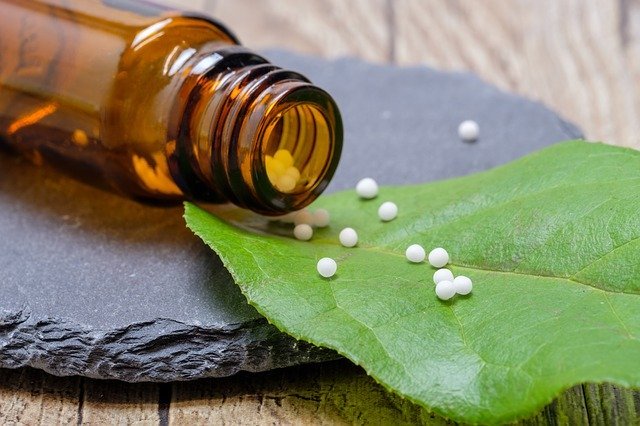
Image Source
Materia Medica and Selecting Remedies
After standardizing this potentization process and the provings for hundreds of remedies, Hahnemann cataloged this information in a Materia Medica, or large reference volume of information much like an encyclopedia. Users of homeopathy consult this Materia Medica to match the appropriate remedy to the symptoms of disease in a patient after taking a case history and complete symptom picture. (2) This process is called finding the similimum. Homeopathy is a bit like getting a jump start for a dead car battery. “The energy sources are the remedies, used in accordance with the law of similars so that the body can run on all cylinders again.”(1)
“Homeopath is not only an energy medicine but is also holistic. Homeopaths believe that the body is much more than the sum of its various parts and that the whole person should be treated. The mind, the emotions and all the various organs are interconnected. It would be unwise to treat one part without considering the whole person.” (1)

Homeopathy Falls Out of Favor
Homeopathy was easily accepted, and flourished throughout the world, especially after Hahnemann created a homeopathic protocol for treating the cholera epidemic in central Europe in 1831. “Cholera was more successfully treated with homeopathy than with orthodox medicine; mortality rates varied between 2.4 and 21.1 percent compared with 50 per cent or more with conventional treatment.” (2)
“However, in 1846 the American Medical Association was founded, which adopted a code of ethics forbidding its members to consult homeopaths,” and The Board of Health in England followed suit claiming that the practice of homeopathy opposed the progress of science. (2)
The American Medical Association worked to close all homeopathic institutions and by 1918 only 7 of the around 100 homeopathic treatment centers were left in the United States. As the twentieth century progressed, the pharmaceutical industry came in to favor with the discovery of penicillin, and the manufacture of powerful drugs began to develop. (2) Homeopathy is a thoughtful and time consuming process when done correctly, following the law of like cures like to choose the best-match remedy. Pharmaceuticals created “the five-minute prescription and a cure for every ill.” (2)

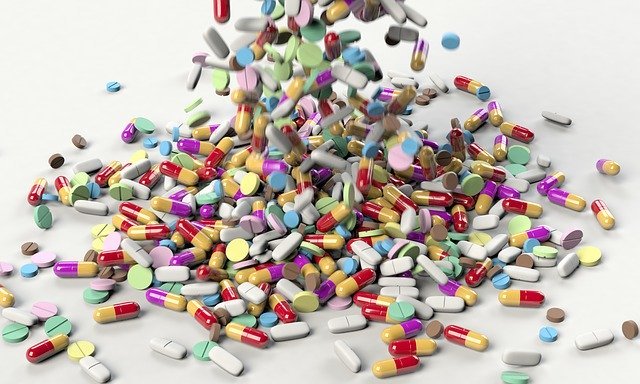
Image Source
Pharmaceutical Drugs
Big drug companies enjoy big benefits. To be more precise,
after accounting for the costs of all research — about $80 billion a year — drug companies had $40 billion more from the top 20 drugs alone, all of which went straight to profits, not research. More excess profit comes from the next 100 or 200 brand-name drugs.(3)
The profit margins are huge, and the board members and investors enjoy the benefits. Unfortunately, the patients foot the bill, often with their life-savings.
Many pharmaceutical drugs are also not what they seem. Some generic brands do not work as well as name brand versions, and many drugs are eventually found to contain dangerous elements or work in unexpected ways, often leading to recalls. (4) Drug developers have often taken chemicals that were designed for nefarious purposes, and re-purposed them into medications. Warfarin is the anticoagulant drug widely used to prevent and treat blood clots. However, its original use was as a rat poison. (5) The drug may work to reduce blood clots, but it has a very long list of serious side effects including severe bleeding from many parts of the body, and not surprisingly, death. (6)
On the other hand, researchers are exploring a homeopathic remedy to prevent blood clots after surgery with promising results and little to no side effects. The randomized, double-blind, placebo-controlled pilot study showed
a trend towards a beneficial effect of ARNICA D12 with regard to reduction of hematoma [blood clot] and pain. (7)
A bottle of 80 doses of Arnica of the same potency used in the trial can be purchased on Amazon for $8.34 US. (8)
However, most patients are not made aware of an effective and inexpensive homeopathic option. The pharmacy-created and marketed drug is often the only choice the patient knows about unless through their own due diligence. Patients are encouraged to implicitly trust medical providers, and most practitioners do not know about or promote homeopathy. Is this really informed consent?

Myths
The lack of knowledge about homeopathy has led to many misconceptions.
- Homeopathy is not a form of herbalism, as no physical matter remains in the remedy - only its energy signature.
- Homeopathy does not have side effects, however the body can have an energetic response to the energetic signature of the material the remedy is made from. These adjustment periods usually only last for a few hours to two days and are usually not disruptive.
- Homeopathic remedies are not placebos. Belief in the remedy does not determine its effectiveness. Only proper matching of energies using the rule of like cures like causes a change. “Homeopathic medicines work on babies and animals, neither of whom are susceptible to the placebo effect.” (2)
- Homeopathy is not unscientific. Medicines are prepared following a specific protocol in specialized laboratories or pharmacies. Provings follow precise rules, have clearly stated controls, and the results are meticulously documented following universal homeopathic laws.

What is true is that homeopathic practitioners are still readily available throughout the world today and regular people enjoy the benefits of homeopathy on a regular basis. Part Two of Homeopathy for Healing and Disease Prevention, will explore my own experiences with choosing homeopathy over allopathic medicine and how to use homeopathy simply and effectively at home.

- Hayfield, R. (2013). Homeopathy: a practical guide: simple remedies for natural health. Wigston: Lorenz Books.
- Castro, M. (1993). Homeopathy for pregnancy, birth, and your babys first year. New York: St. Martins Press.
- Emanuel, E. J. (2019, March 23). Big Pharma’s Go-To Defense of Soaring Drug Prices Doesn’t Add Up. Retrieved from https://www.theatlantic.com/health/archive/2019/03/drug-prices-high-cost-research-and-development/585253/
- Johnson, C. Y. (2019, November 8). A tiny pharmacy is identifying big problems with common drugs, including Zantac. Retrieved from https://www.washingtonpost.com/science/a-tiny-pharmacy-is-identifying-big-problems-with-common-drugs-including-zantac/2019/11/08/6dd009ca-eb76-11e9-9c6d-436a0df4f31d_story.html
- Lim, G. B. (2017, December 14). Warfarin: from rat poison to clinical use. Retrieved from https://www.nature.com/articles/nrcardio.2017.172
- Warfarin side effects: Watch for interactions. (2020, February 6). Retrieved from https://www.mayoclinic.org/diseases-conditions/deep-vein-thrombosis/in-depth/warfarin-side-effects/art-20047592
- Wolf, M., Tamaschke, C., Mayer, W., & Heger, M. (2003, October). Efficacy of Arnica in varicose vein surgery: results of a randomized, double-blind, placebo-controlled pilot study. Retrieved from https://www.ncbi.nlm.nih.gov/pubmed/14605480
- Amazon.com. (2020). [online] Retrieved from https://www.amazon.com/BOIRON-USA-Arnica-Montana-Health/dp/B000Y2845W [Accessed 18 Feb. 2020].

The use of any information provided on this site is solely at your own risk. Do your own research, and make the best choices for you.
I am grateful to find a place with rich soil to grow a community. May we take root, and flourish together.
All artwork, photographs, and content are original and created by @bia.birch unless otherwise credited.


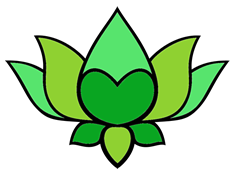
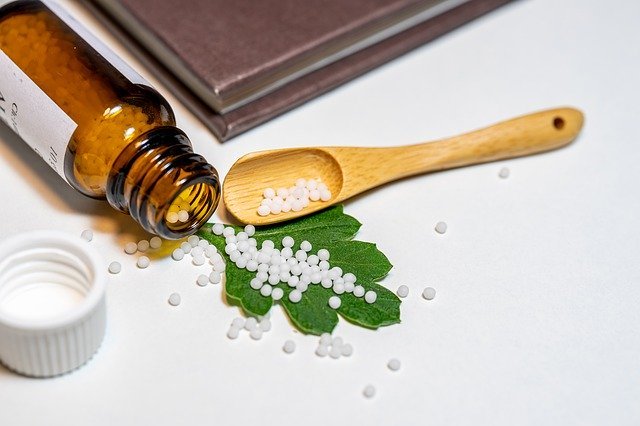
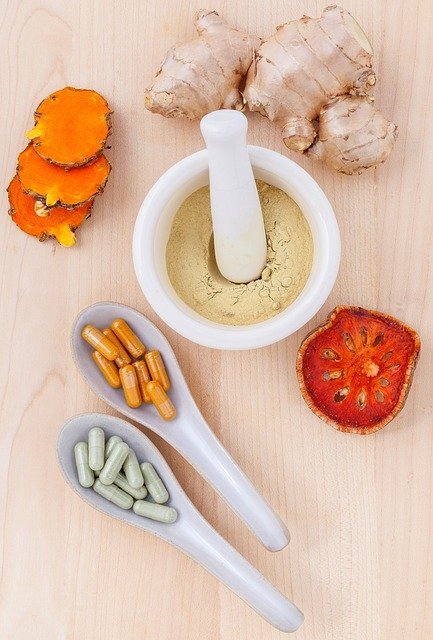
This is a really will written and researched post.
@tipu curate
Upvoted 👌 (Mana: 15/25 - need recharge?)
Thank you @minismallholding 🌱
You've been visited by @minismallholding from Homesteaders Co-op.
I’ve featured your post in the Homesteaders – Living Naturally newsletter.
A community marketplace of ethical, handmade and sustainable products available for STEEM, SBD (and USD): https://homesteaderscoop.com
follow: @homesteaderscoop
Wow. A detailed, beautifully presented post. It was a bit of a disaster when it fell out of favour - my ex was a homeopath and he lost a lot of work out of it. There's still homeopathic remedies I use to this day - interested to know what you might use and looking forward to next post!
If you like what we do, consider delegation or following our curation trail on Steemauto. All are welcome to join us on Discord.
Thank you so much! It was fun to write. I admire homeopaths, and really any practitioner who goes against the grain of allopathic medicine if they believe there are other ways to create healing. It takes so much courage, research and dedication. 🌱
Congratulations @bia.birch! You have completed the following achievement on the Steem blockchain and have been rewarded with new badge(s) :
You can view your badges on your Steem Board and compare to others on the Steem Ranking
If you no longer want to receive notifications, reply to this comment with the word
STOPTo support your work, I also upvoted your post!
Do not miss the last post from @steemitboard:
#posh
Homeopathy for Healing and Disease Prevention - Part One